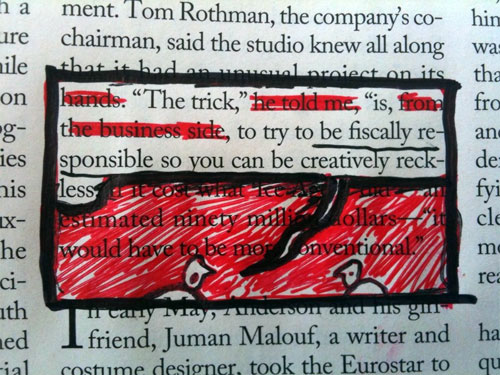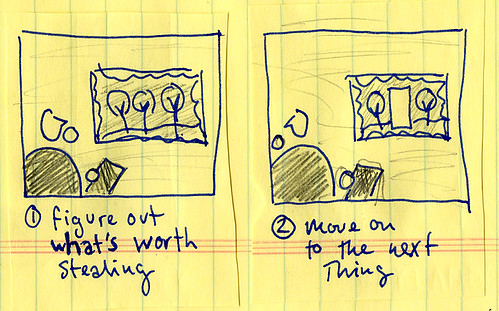
from The New Yorker’s profile of Wes Anderson
New word (for me) via Wikipedia:
Contextomy refers to the selective excerpting of words from their original linguistic context in a way that distorts the source’s intended meaning, a practice commonly referred to as “quoting out of context”. The problem here is not the removal of a quote from its original context (as all quotes are) per se, but to the quoter’s decision to exclude from the excerpt certain nearby phrases or sentences (which become “context” by virtue of the exclusion) that serve to clarify the intentions behind the selected words. Comparing this practice to surgical excision, historian Milton Mayer coined the term “contextomy” to describe its use by Julius Streicher, editor of the infamous Nazi broadsheet Der Stürmer in Weimar-era Germany. To arouse anti-semitic sentiments among the weekly’s working class Christian readership, Streicher regularly published truncated quotations from Talmudic texts that, in their shortened form, appear to advocate greed, slavery, and ritualistic murder. Although rarely employed to this malicious extreme, contextomy is a common method of misrepresentation in contemporary mass media, and studies have demonstrated that the effects of this misrepresentation can linger even after the audience is exposed to the original, in context, quote.
In other words, how I make all my art.
See also: “How To Look At Art:”

Nice post. As I read it I wondered if contextonomy would apply to the classic version of newspaper cutouts used in ransom notes.